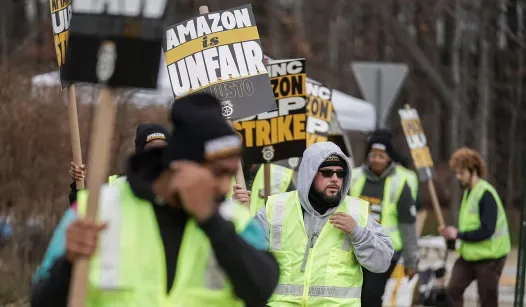In a significant shift in the labor landscape, the percentage of U.S. workers who are union members has fallen below 10% for the first time in history. This decline marks a pivotal moment in the relationship between labor unions and the workforce, reflecting broader changes in the economy, employment patterns, and societal attitudes toward collective bargaining.
Historically, labor unions have played a vital role in advocating for workers’ rights, negotiating better wages, and improving working conditions. However, over the past few decades, several factors have contributed to the steady decline in union membership. These include the rise of the gig economy, changes in labor laws, and a growing preference among some workers for individual negotiation over collective bargaining.
The gig economy, characterized by short-term contracts and freelance work, has become increasingly prevalent. Workers in this sector often have less job security and fewer benefits than traditional employees, making unionization efforts more challenging. Additionally, many gig workers may not see the value in joining a union, as their work arrangements can be fluid and temporary.
Changes in labor laws have also impacted union membership. In recent years, several states have passed right-to-work laws, which allow workers to opt out of joining a union or paying union dues, even if they benefit from collective bargaining agreements. These laws can weaken unions’ financial stability and bargaining power, further contributing to the decline in membership.
Moreover, there is a generational shift in attitudes toward unions. Younger workers, who are increasingly entering the workforce, often prioritize flexibility and autonomy over traditional employment structures. This shift can lead to a decreased interest in union membership, as many younger workers may not perceive unions as relevant to their career aspirations.
The implications of this decline in union membership are profound. Without the collective power that unions provide, workers may find it more challenging to negotiate fair wages and benefits. This could exacerbate income inequality and diminish workers’ rights in the long run.
Despite these challenges, there are signs of a potential resurgence in labor activism. Recent high-profile strikes and labor movements have garnered significant media attention and public support, indicating that workers are still willing to advocate for their rights. This renewed interest in collective action could lead to a reimagining of unions in the modern workforce, adapting to the needs of today’s workers.
As we reflect on this historic decline in union membership, it is essential to consider the future of labor in the United States. Will unions adapt to the changing landscape and find new ways to engage workers, or will their influence continue to wane? The answers to these questions will shape the future of work and the rights of American workers in the years to come.
